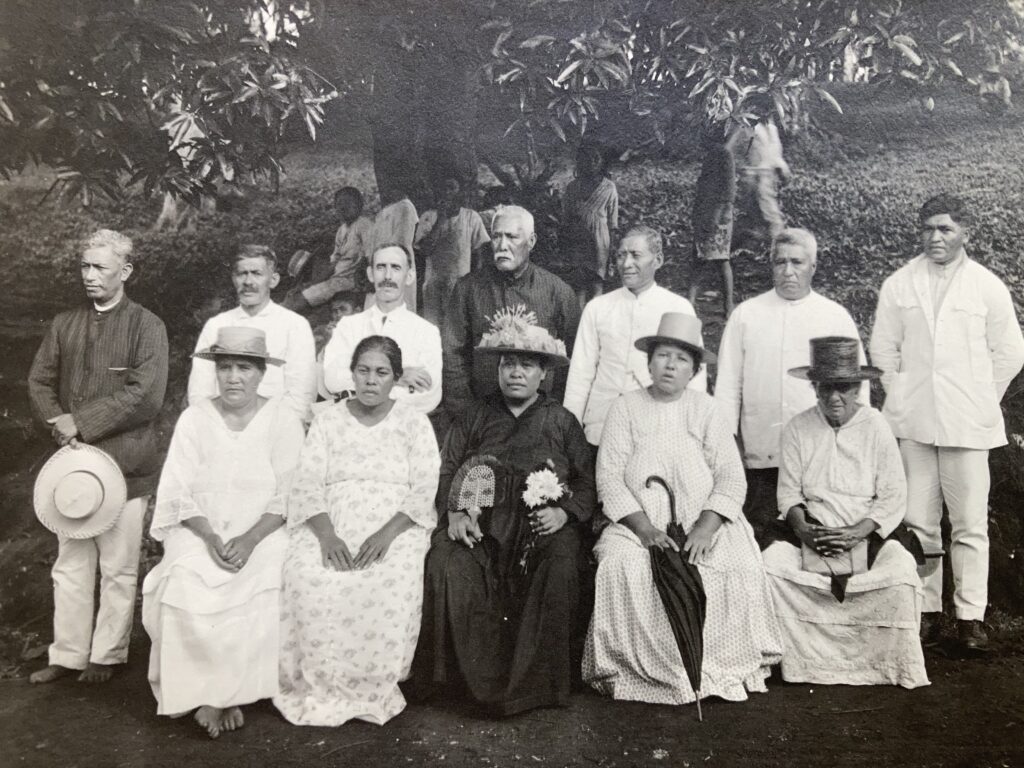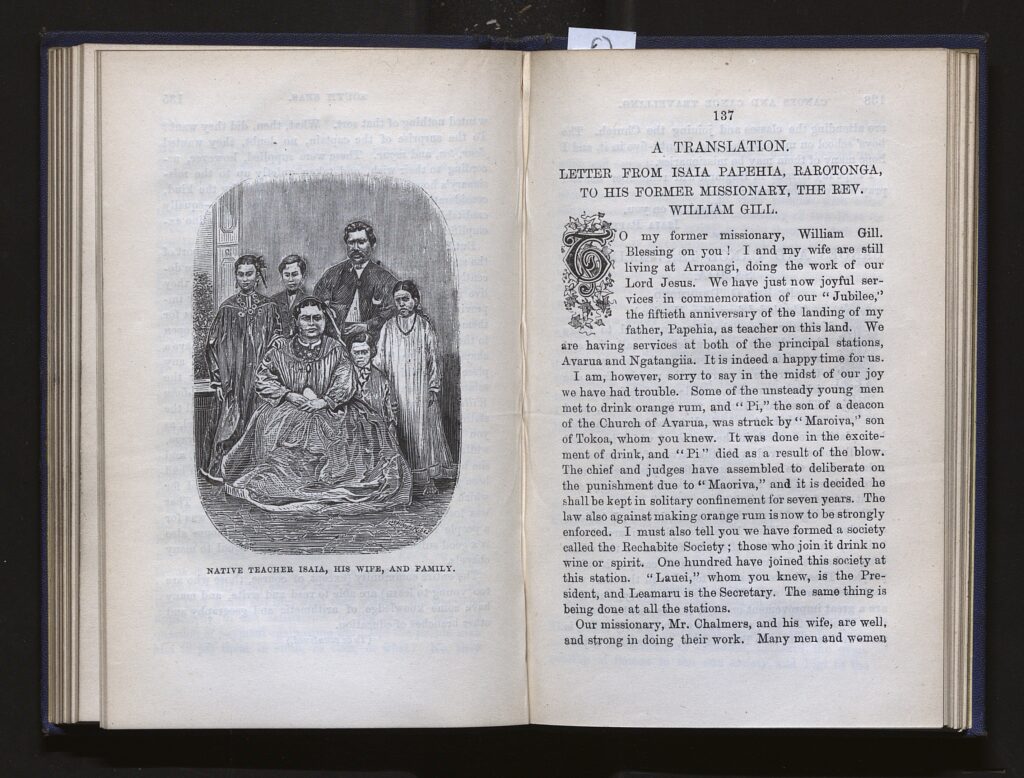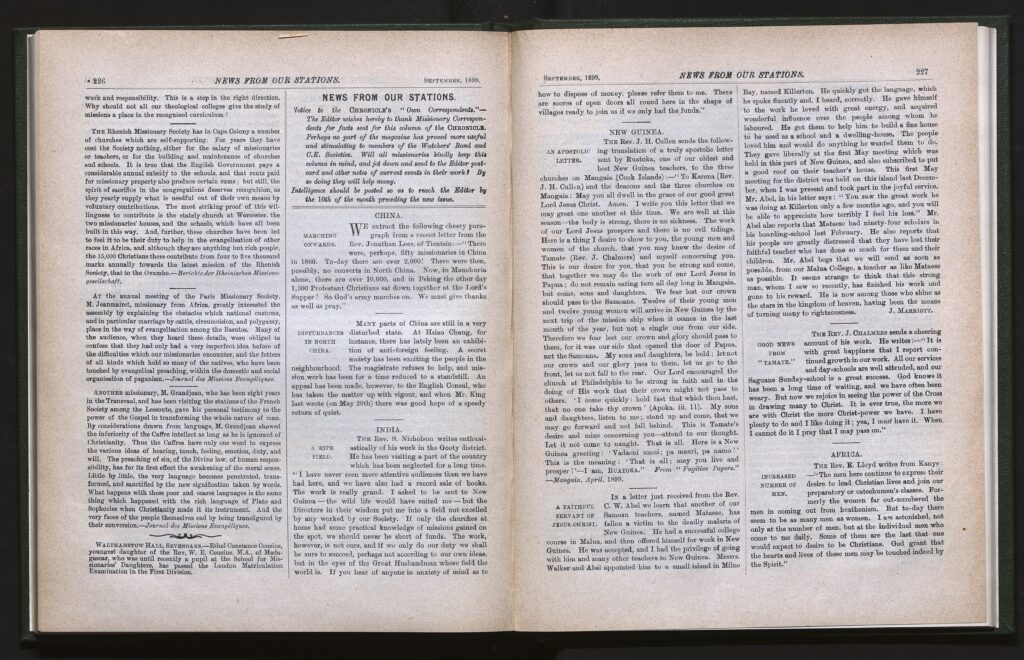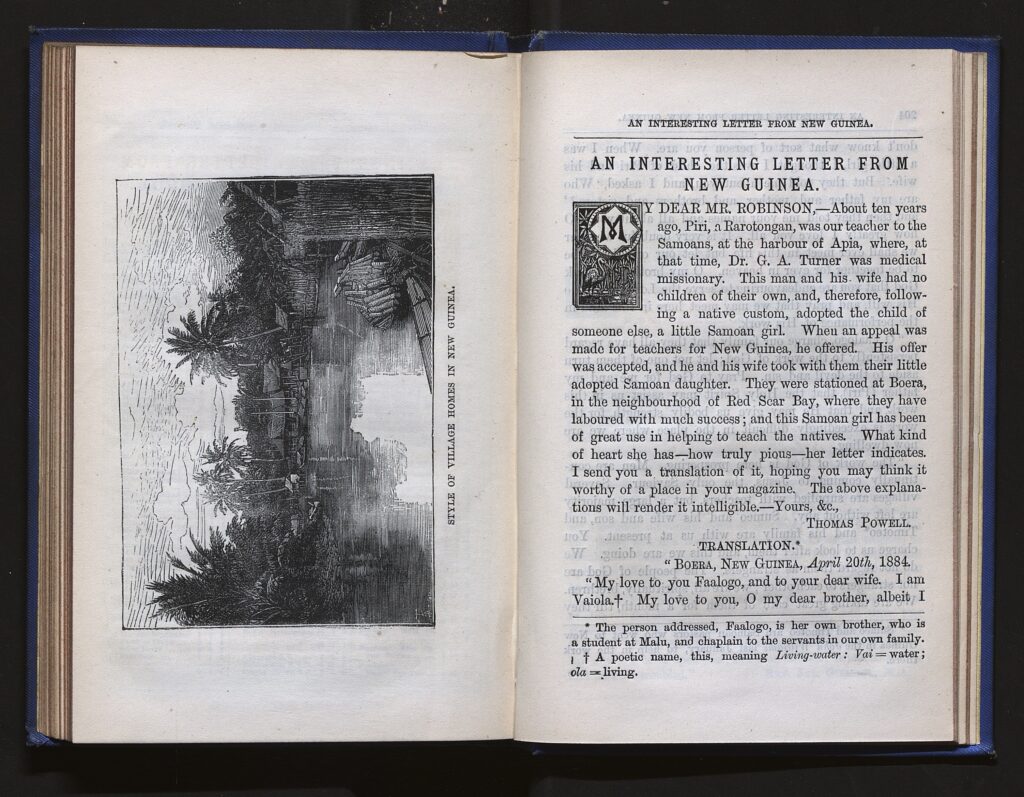Part 2/ Cook Islander missionaries: recovering hidden histories from missionary archives
This week’s blog marks celebrations of the bicentenary of the arrival of the Christian gospel in the Cook Islands taking place in Aitutaki this month, and picks up from our previous blog which looked at the instrumental and largely forgotten role of indigenous Cook Islanders in the evangelisation of the Pacific region from the early 19th century, and new research which is rediscovering evidence of the personal histories of these men and women found in European missionary archives.

Some of this research will be published in a special issue of the Journal of Pacific History, to commemorate the bicentenary of the Cook Islands Christian Church. This will include a piece by Wendy Rowan, whose research has focused on an examination of magazines published by the London Missionary Society (LMS). The experiences of indigenous pastors or ‘teachers’ are often lost to the official record, but an interrogation of these missionary sources can offer glimpses of their lives, albeit mediated by the European missionaries or framed for the purpose of promoting the missionary endeavour to audiences at home in Britain. With these important caveats in mind, evidence can be pieced together. We will look briefly at just a few interesting examples here.

We begin with a remarkable photograph held in the LMS collections at SOAS Library – elaborately framed, but labelled simply as ‘“Isaia” Rarotonga 1872’. Then the chance find of a letter in the Juvenile Missionary Magazine for July 1875, published by the LMS for its younger Sunday School audiences, which identifies the subject of the photograph as Isaia Papehia, son of Papehia (thought to be Papeiha, also known as Papehia, Papeia, or Pepeia, a pioneering Tahitian evangelist who was instrumental in the conversion of Aitutaki, Rarotonga and the remaining Cook Islands to Christianity). The letter is a translation of the original written by Isaia on the occasion of the fiftieth anniversary of his father’s arrival as a ‘teacher’ on the island of Rarotonga, and gives us a small glimpse into the world of Isaia and his contemporaries, including events held to mark the Jubilee at the two principal Rarotongan mission stations, Avaru and Ngatangiia, but also some of the human drama with an account of a physical altercation and subsequent death, and a commentary on the consumption of ‘orange rum’ in the region and the response by the mission to this perceived problem.

Research into Cook Islanders has located similar evidence in magazines, histories and accounts published by the British missionaries who worked closely with them. Through these we get insights into the lives of men such as Ruatoka and Piri, who worked with the London Missionary Society in Papua New Guinea from the 1870s.

“None who knew Ruatoka, doubted his zeal. A big man with a big voice, he used all his strength unsparingly and tried to keep those around him going at the same high-pressure speed. It was the same whether he was trying to cover the stages of a journey in record time, or preaching a sermon that was to rouse the village. At any time he was ready for either. Preaching was his greatest joy, and he allured or rather commanded to brighter worlds and led the way…”
H.M Dauncey ‘Ruatoka’, from M.S. Hutchin Nov 1905. p.206; 9677 Alexander Turnbull Library – Diaries. 1 Wellington N.Z.
This was how H. M. Dauncey, a British missionary with the LMS, described his comrade. Ruatoka (1846?-1903) was born on Mangaia Island, and attended Takamoa Theological College, Rarotonga, which had been established by the LMS. He was one of six Polynesians selected to evangelise Papua New Guinea, and landed at Manu Manu in November 1872, with his wife, Tungane. In 1873, Ruatoka and three colleagues sailed for Port Moresby, where he remained until his death. As well as being a successful evangelist, he served as a guide, interpreter, mediator and advisor to the British missionaries. A translation of ‘An Apostolic Letter’ from Ruatoka was published in the LMS Chronicle, September 1899, but more significantly the original version was published in Fugitive Papers in November 1898, a copy of which is available in the Library – and here perhaps, we can hear Ruatoka’s own voice.


Research in LMS publications also gives us some clues about the life of Ruatoka’s contemporary, Piri (1864-1888), and his family. Piri (Avarua) entered Takamoa in February 1860, and served with the LMS in Samoa from 1864. Piri lost his first wife in Samoa, and subsequently married Maki (d. 1889), a widow (wife of Lameka from Mangaia). They adopted a Samoan girl (Vaiola), before volunteering for the LMS mission to Papua New Guinea, joining the first party to travel there from the Cook Islands in 1872. The British missionary James Chalmers described Piri as “a strong hearty fellow“, who arrived at Manu Manu, in a “flaming red shirt“. From Manu Manu, Piri and his wife were removed with the others because of serious illness, and they returned to Port Moresby after five months at Somerset, Cape York, in November 1873. In 1874 Piri and Maki were posted to Boera, to set up a new station on the coast, where they subsequently served for 16 years. There are letters from Piri, Maki and also from their daughter, Vaiola, in the Juvenile Missionary Magazine, which relate some of their experiences and challenges faced at Boera.
“I the wife of Piri send this letter to you. I shall never forget that it was you who instructed me in the blessed word of God and treated me as your own child … I am often sickly, and perhaps I shall not be left long here to work for the Master. We are still here in Papua, trying hard to acquire the language of the people and striving to point them to Jesus…”
Maki to Mrs Wyatt Gill, her friend from Mangaia. LMS Juvenile Missionary Magazine’, August 1875, pp 5 & 6
“Pray to God for me and my father (Piri), that the Holy Spirit may assist us in this work, and that He may give us bodily strength, for the work is exceedingly difficult in the place we are now dwelling… The work of God here is prospering. Men are continually coming to Jesus, the only saviour.’ “
Vaiola to Thomas Powell, a Samoan missionary, about the challenges in Boera. Juvenile Missionary Magazine, November 1884, p.203


More of these personal stories can be read in Wendy Rowan’s publications (details below), and also in the various articles to be published in the forthcoming special edition of the Journal of Pacific History. Copies of the LMS magazines cited here, as well as original documents and photographs from the LMS mission to the ‘South Seas’ and Papua New Guinea, can be seen at SOAS Special Collections. The publications are also part of a new digitisation project and will be made available on the SOAS Digital Collections.
Book 1 ‘Takamoa Bicentenary book 1821 -1871. Avarua, Cook islands. The lost stories of the early missionaries from the Cook islands’, collated by Wendy Rowan & Rev Robert Evans; self-published, Springwood Printing Company, Faulconbridge, NSW, April 2020. ISBN 978-0-9945203-9-5
Book 2 ‘Cook islander missionaries in British New Guinea 1872 – 1915′, collated by Wendy Rowan & Robert Evans; self-published. Printer – Springwood Printing Company, Faulconbridge, NSW, June 2020. ISBN 978-0-6489064-0-7

Talofa lava, e Wanda.
Please email me for more information.
kevinsalisburynz@gmail.com
Talofa lava,
I was thrilled to read the story of Vaiola. I am a researcher conducting research into the LMS periodical ‘Sulu Samoa’. I understand that there were other LMS publications in Indigenous languages. I have found four others. Can you please let me know what other publications were out there.
Many thanks,
Wanda Ieremia-Allan